Advisory committee on Monroe County jail hits rough road trying to find common ground
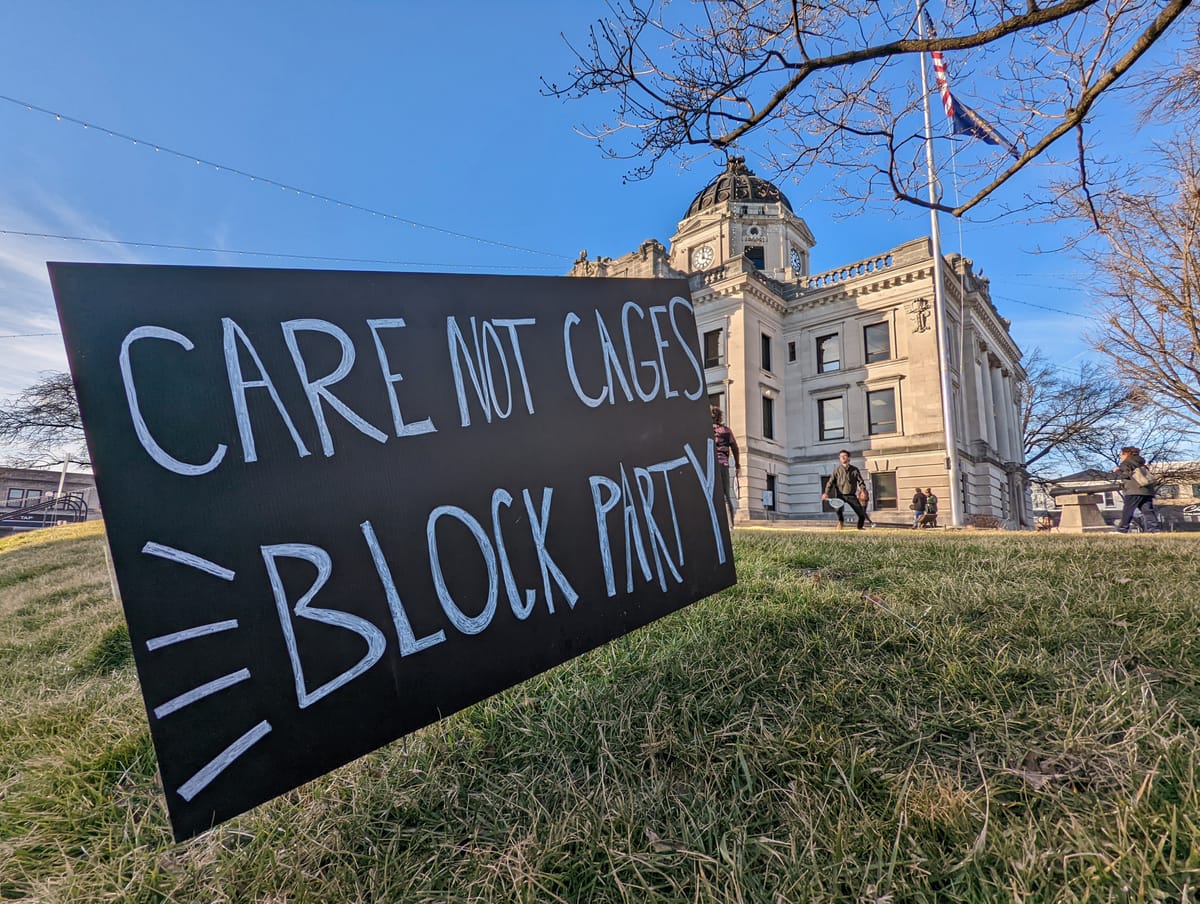
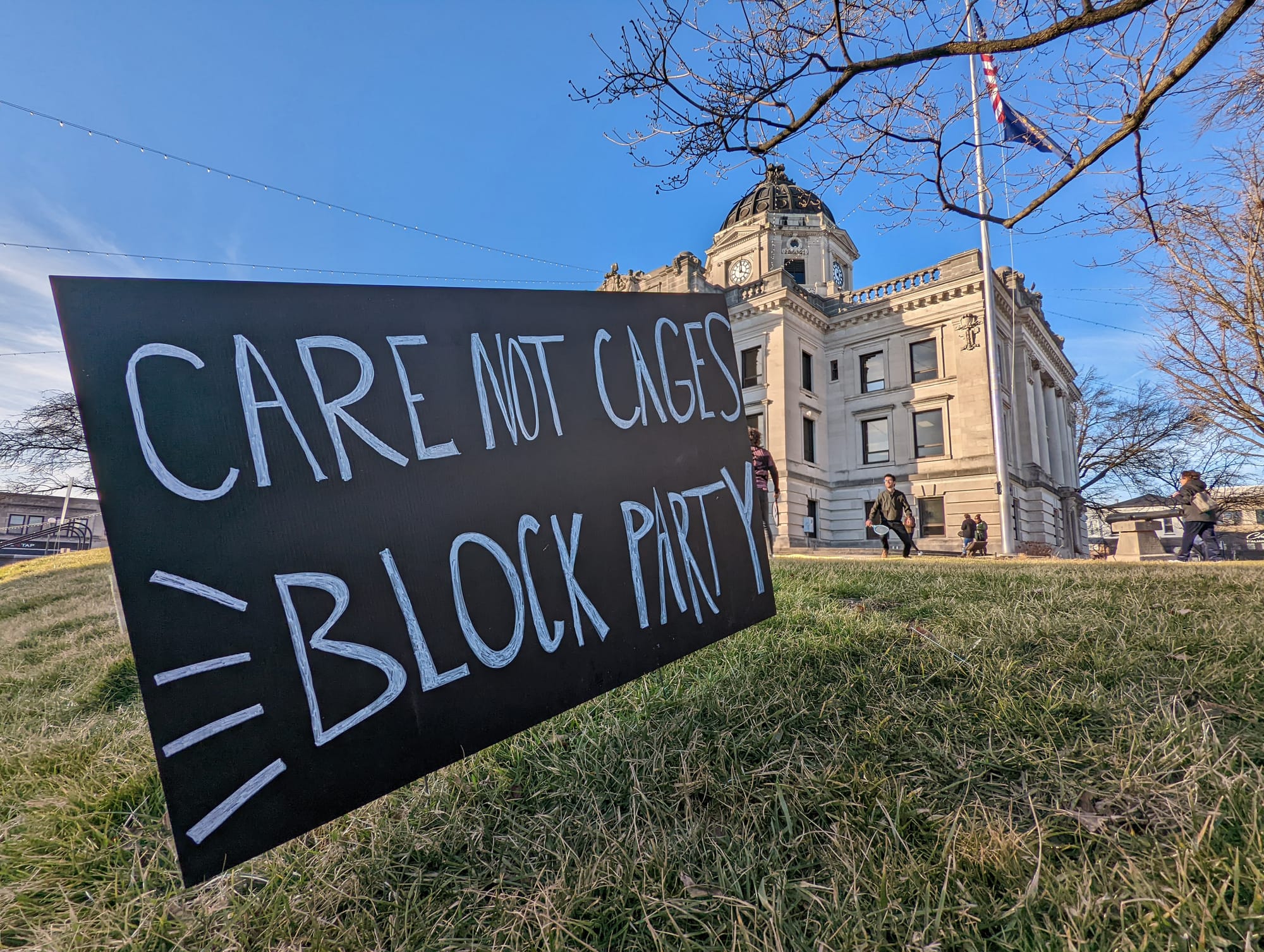
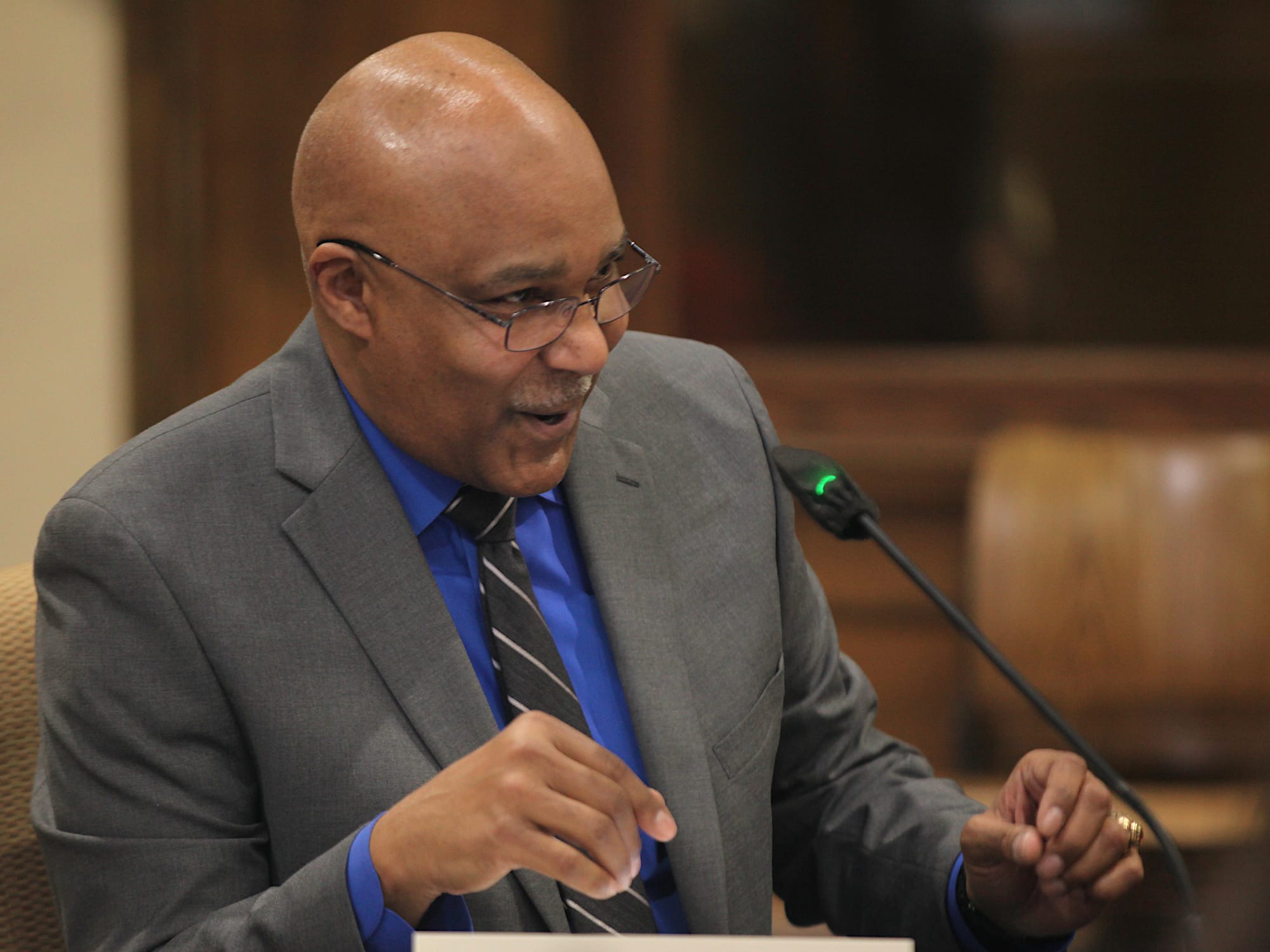
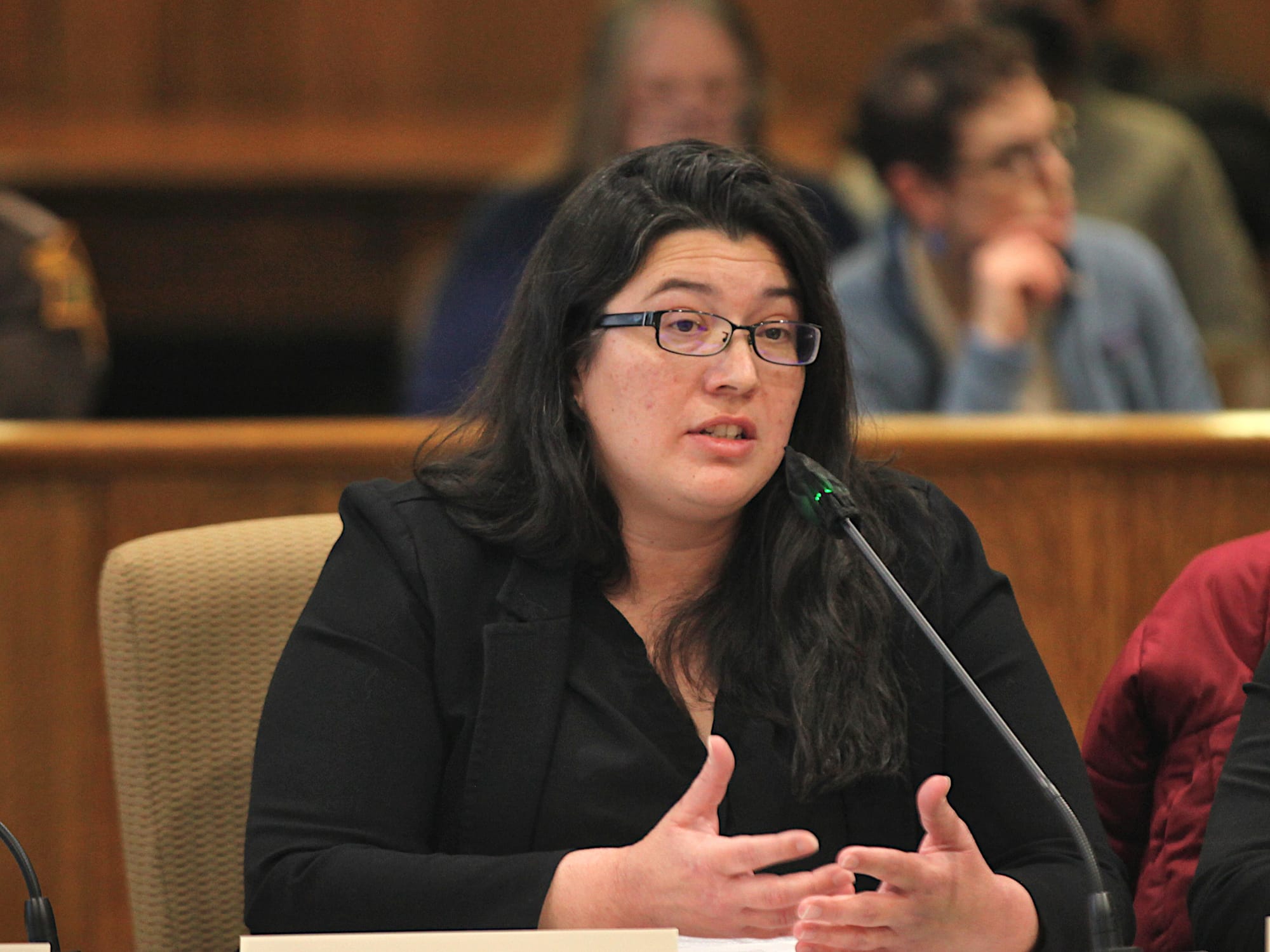
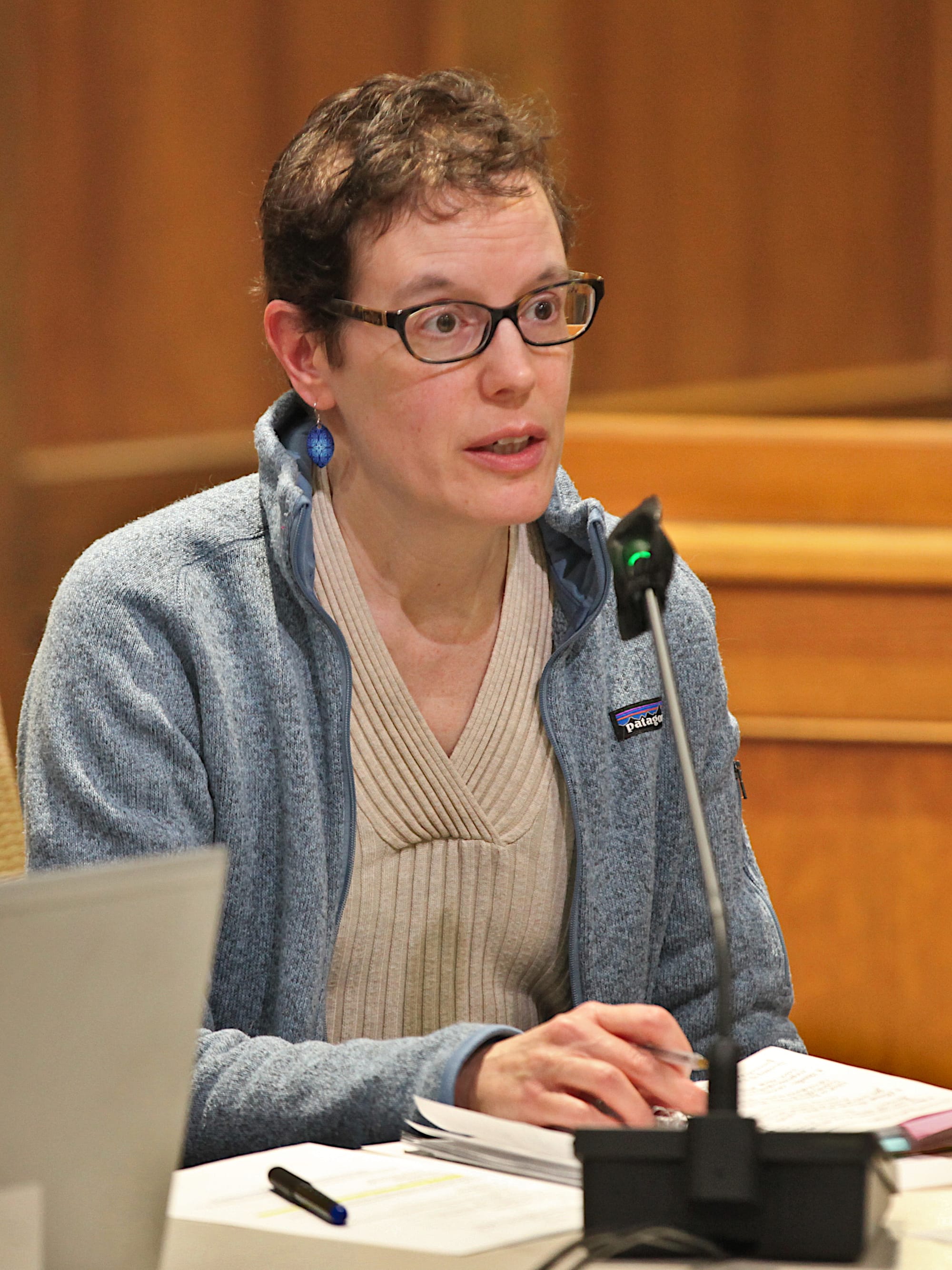
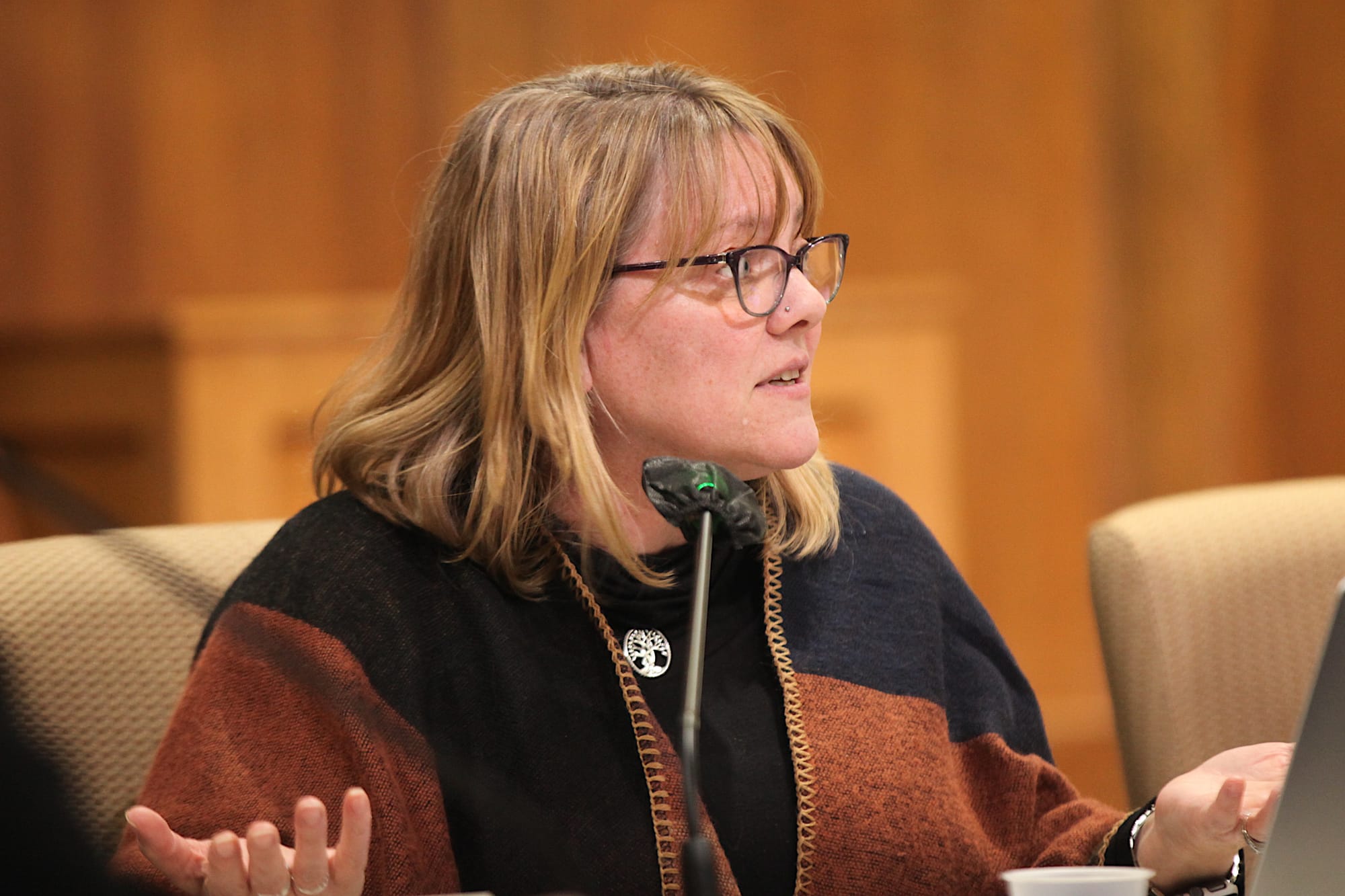
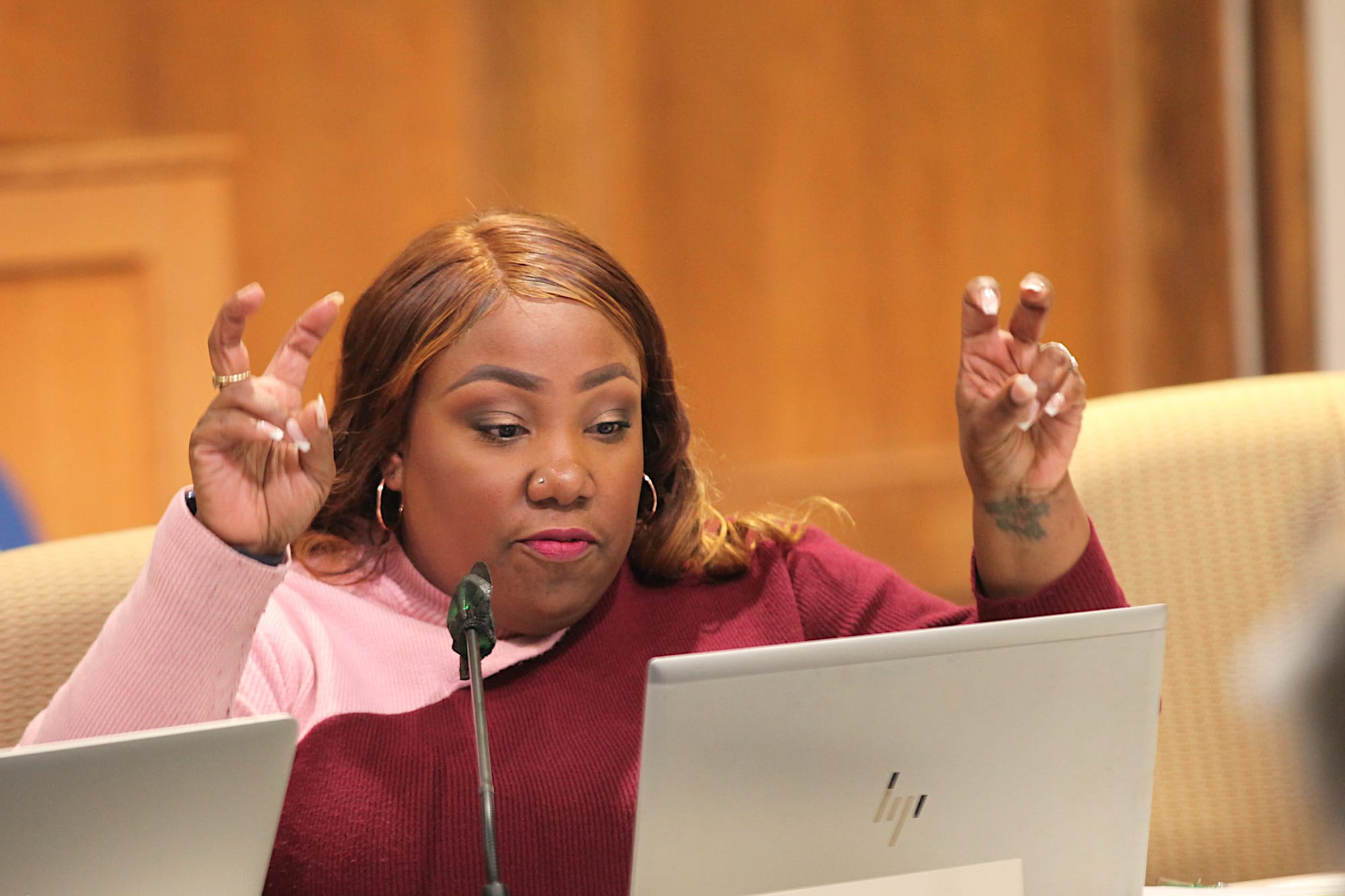
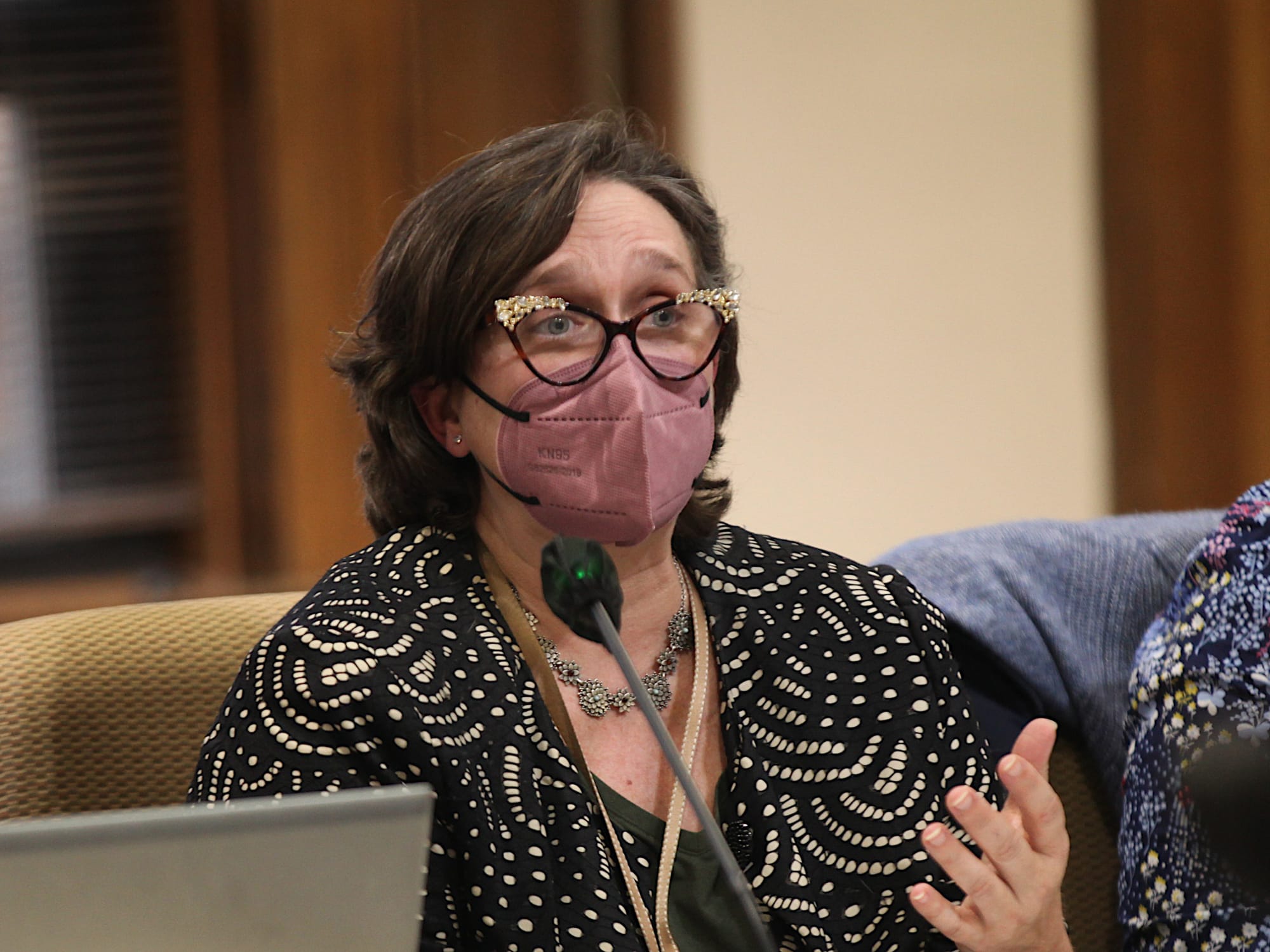
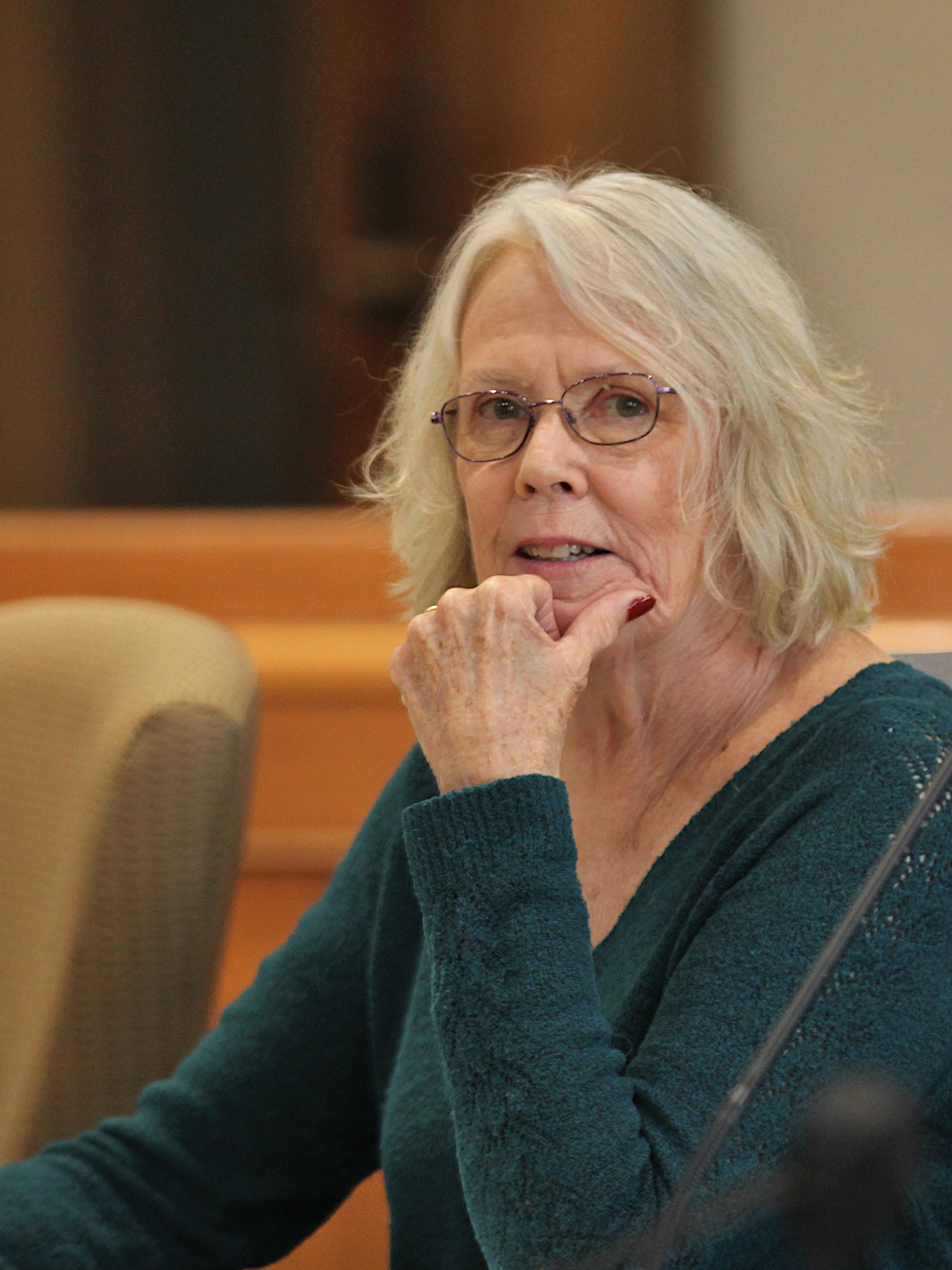
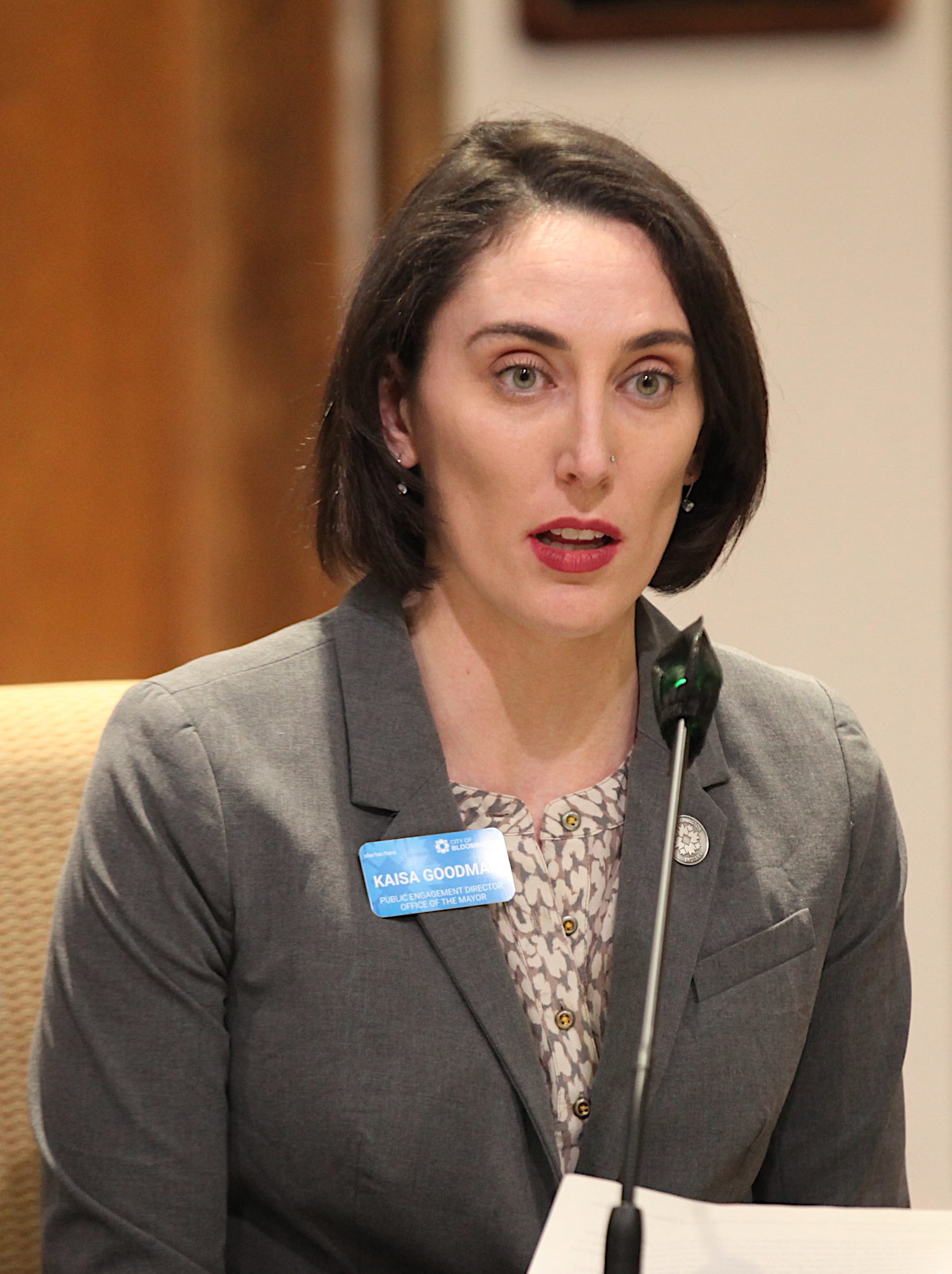
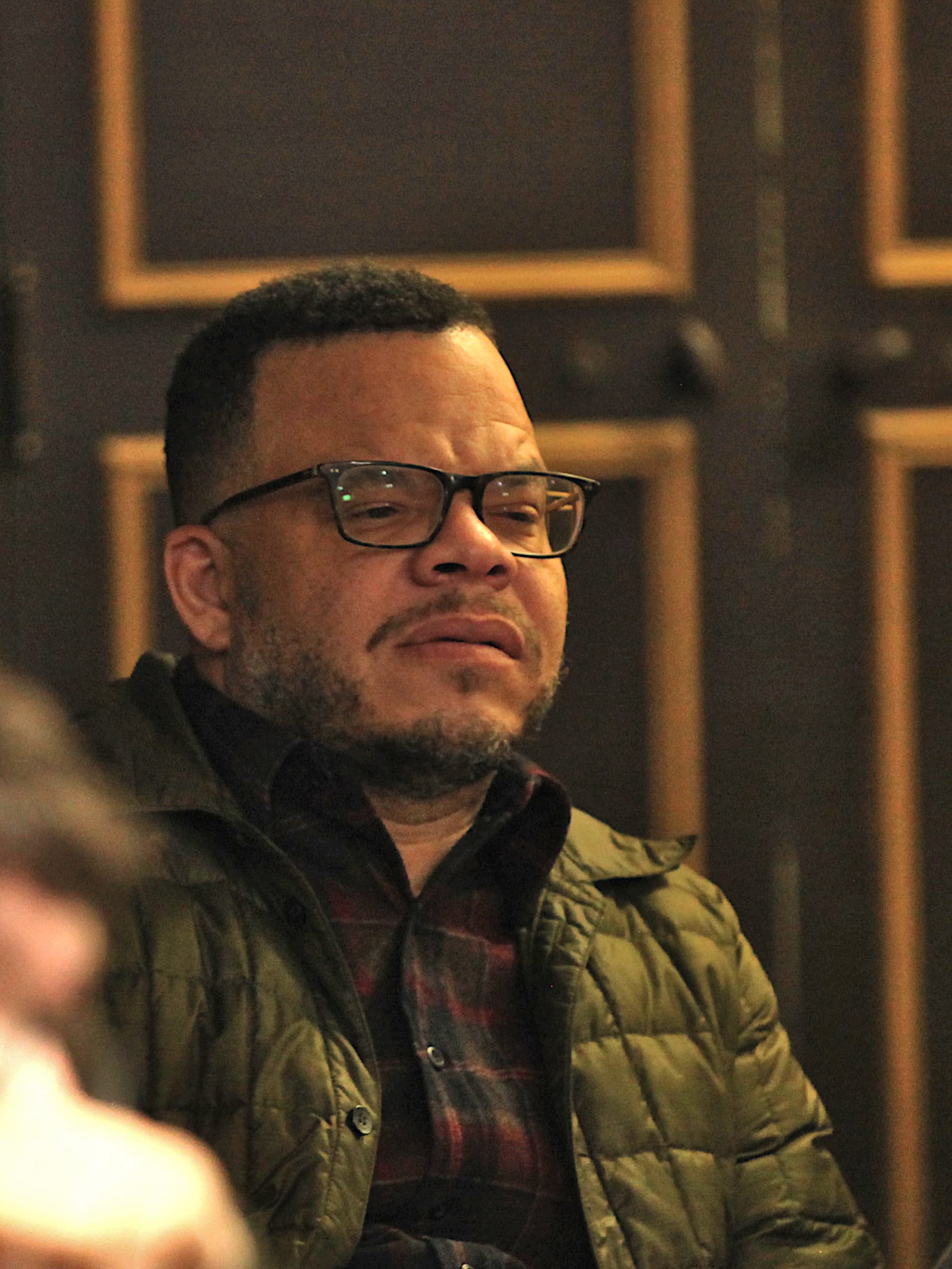
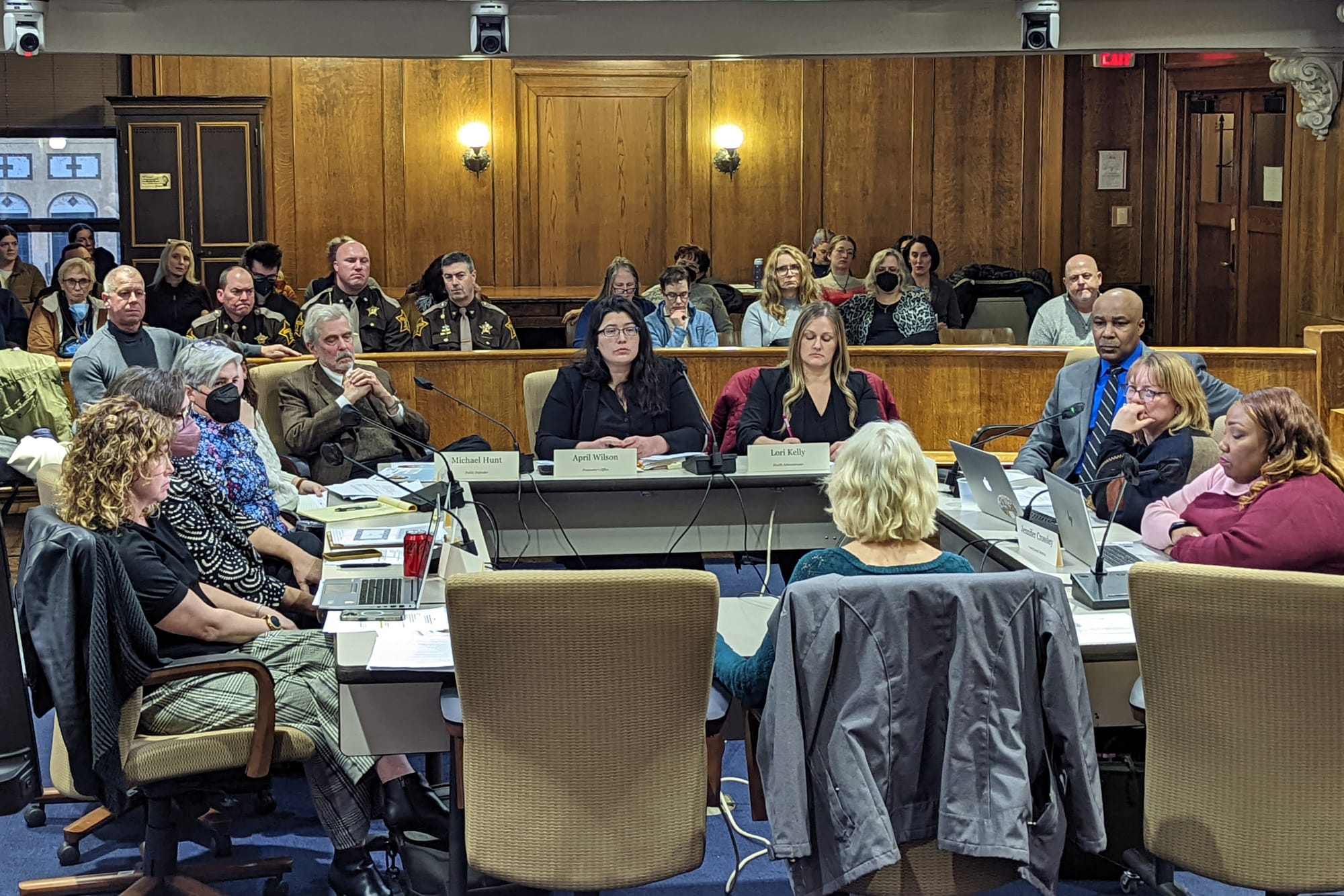
Outside on the Monroe County courthouse lawn, before Monday’s meeting of the community justice reform committee (CJRC), members of a group called “Care Not Cages” held what they described as a block party—in opposition to construction of a new jail.
At the CJRC meeting itself, members were frank in airing their disappointment about the way the two representatives from the board of county commissioners have approached the work of making recommendations on addressing problems at the jail.
The facility has been described in a consultant’s report as “failing.”
The 14-member CJRC includes county councilors, judges, the sheriff, representatives from the prosecutor’s office, public defenders office, and the county health administrator, among others.
Drawing specific criticism on Monday was the lack of advance information given by commissioners to CJRC members about a trip they took last week to Arizona, to visit correctional facilities there.
County councilor Kate Wiltz said she was “not feeling as though the information that the commissioners are getting is being shared in a transparent manner.” She added, “And that, I think, is the frustration that I’m picking up on in the room.”
Circuit court judge Catherine Stafford said, “I don’t think anyone objects to the commissioners taking a trip—last minute or not.” She continued, “I would have liked to have known about the trips, so that if I had questions that you could have posed to the people there during the trip, we could have all gotten the benefit of those answers. ”
Stafford added, “I think we all would just like to know what’s happening, at least as it’s happening, rather than finding out about it on the agenda, after the fact.
On Monday, county commissioners Lee Jones and Julie Thomas were just as blunt when they described what they see as the proper role for other committee members, especially when it comes to identifying potential land that could serve as the location for a new correctional facility.
At Monday’s meeting, commissioners established that they see it as their role to identify a location for a new jail, and to make the decision about land purchase. That’s a topic that has become more challenging, because in December, on a unanimous vote, Bloomington’s city council rejected a rezone request for land the commissioners wanted to purchase and use for a new jail.
Deputy prosecutor April Wilson asked that the county-owned property off Rogers Street, south of Catalent, be reconsidered as a potential jail location. Jones told her the county has “other plans” for that property.
At one point, Thomas drew an analogy to “lanes,” which was a thread that wound through the rest of the meeting.
“I just want to reiterate that we all have lanes, right?” Thomas said. She continued, “We all have our responsibilities here—council, commissioners, the criminal justice side. We all have our lanes, and we all have aspects of this that need to be addressed in terms of reform.”
Thomas added that she does not think anyone could be expected to hand over their responsibility to “the ‘community’, which is a very broad term.”
County councilors Jennifer Crossley and Kate Wiltz pointed out that the Monroe County council, as the fiscal body of the county, has to approve all the expenditures.
Wiltz put it like this: “County council needs to be on board with your decision. And it’s frustrating to not feel as though our lane is appreciated, so to speak.”
Jones replied to Wiltz by saying, “I think it’s simply a matter of: We haven’t yet reached your lane.”
That remark drew grumbles from the audience. An exasperated Wiltz reacted with: “I am sorry—Wow!”
Another criticism made by CJRC members on Monday was about the composition of the CJRC. It was the county commissioners who established the 14-member CJRC as an advisory group—to make recommendations based on the work of consultants, who delivered reports on Monroe County’s “failing” jail facility 18 months ago.
CJRC members were critical of the fact that county commissioners did not appoint any representatives from the city of Bloomington government to the CJRC, despite calls to do that.
Crossley indicated that without representatives to the CJRC from the city of Bloomington government she does not think the committee can be described as reflective of the community.
Crossley put it like this: “I will continue to beat this old drum, for as long as I can continue to have breath in this old body: We have got to make sure that we are having community input.”
Attending Monday’s meeting were Bloomington councilmember Isabel Piedmont-Smith, and the city’s public engagement director, Kaisa Goodman, as well as former deputy mayor Don Griffin, who is running for mayor.
Piedmont-Smith and Goodman spoke during the time at the end of the meeting that was allowed for public commentary.
Piedmont-Smith picked up on the theme of “lanes” when she said, “I was quite concerned about the analogy by commissioner Thomas—about us all being in separate lanes. How can we ever come together and work collaboratively, if we all stay in our separate lanes?”
Piedmont-Smith continued, “It seems like it’s only the commissioners who have the roadmap for these lanes.”
Piedmont-Smith added, “Greater communication with the city could avoid problems in the future because we do want to work with you. We do have expertise. And I know commissioner Jones just laughed when I said, “We want to work with you,” well, we do.”
On Monday, the group did not reach the meeting agenda item that was supposed to be a report from the commissioners on their trip to Arizona to visit correctional facilities.
The next meeting of the CJRC is set for Jan. 23 at 4:30 p.m.
A recording of the Zoom broadcast of Monday’s CJRC meeting, is available under the Jan. 9 calendar event listing. The Zoom recording includes a transcript where each speaking turn is clickable, which cues up the video at the time the turn starts.
Photos: CJRC meeting (Jan. 9, 2023)
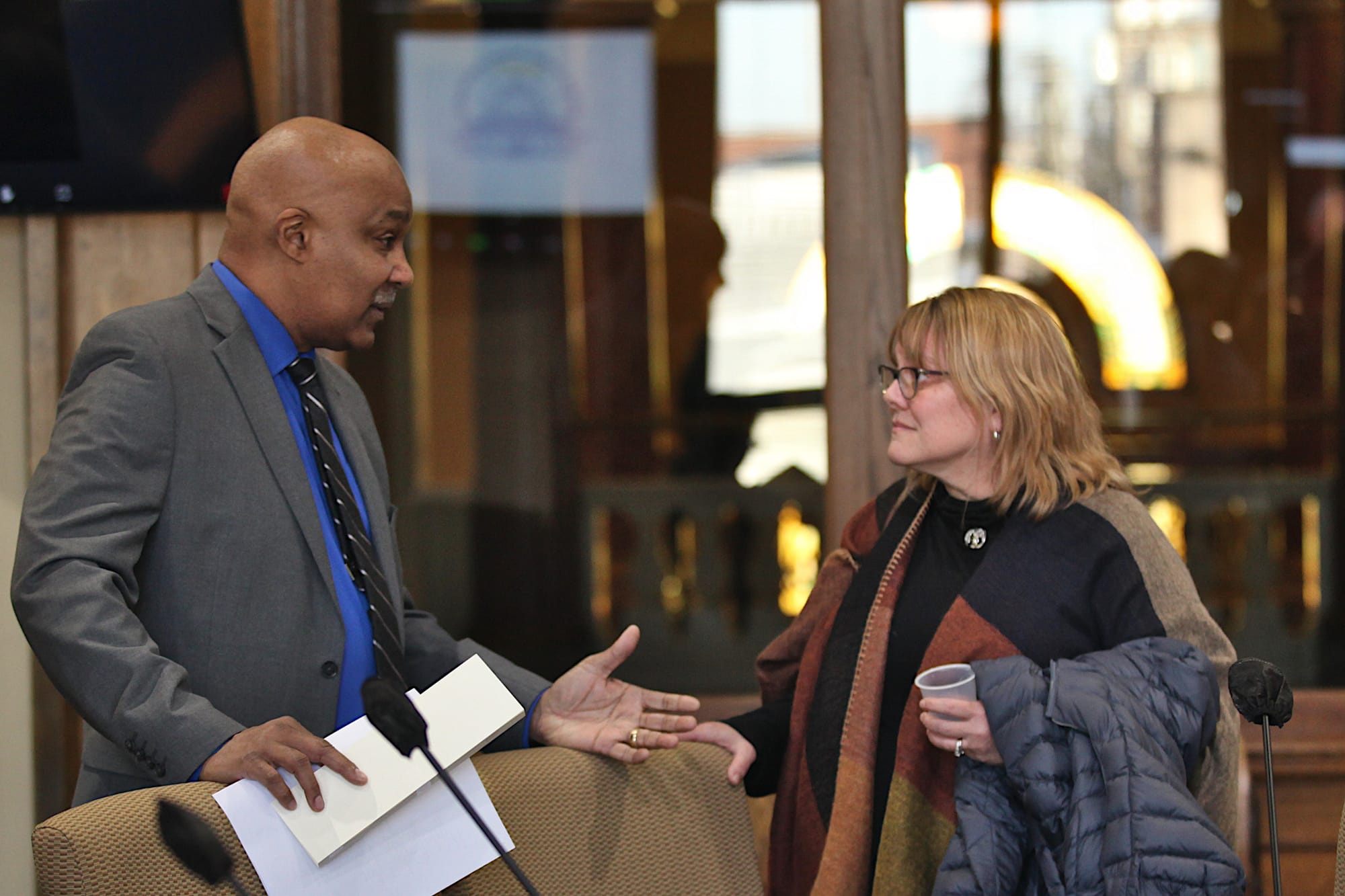
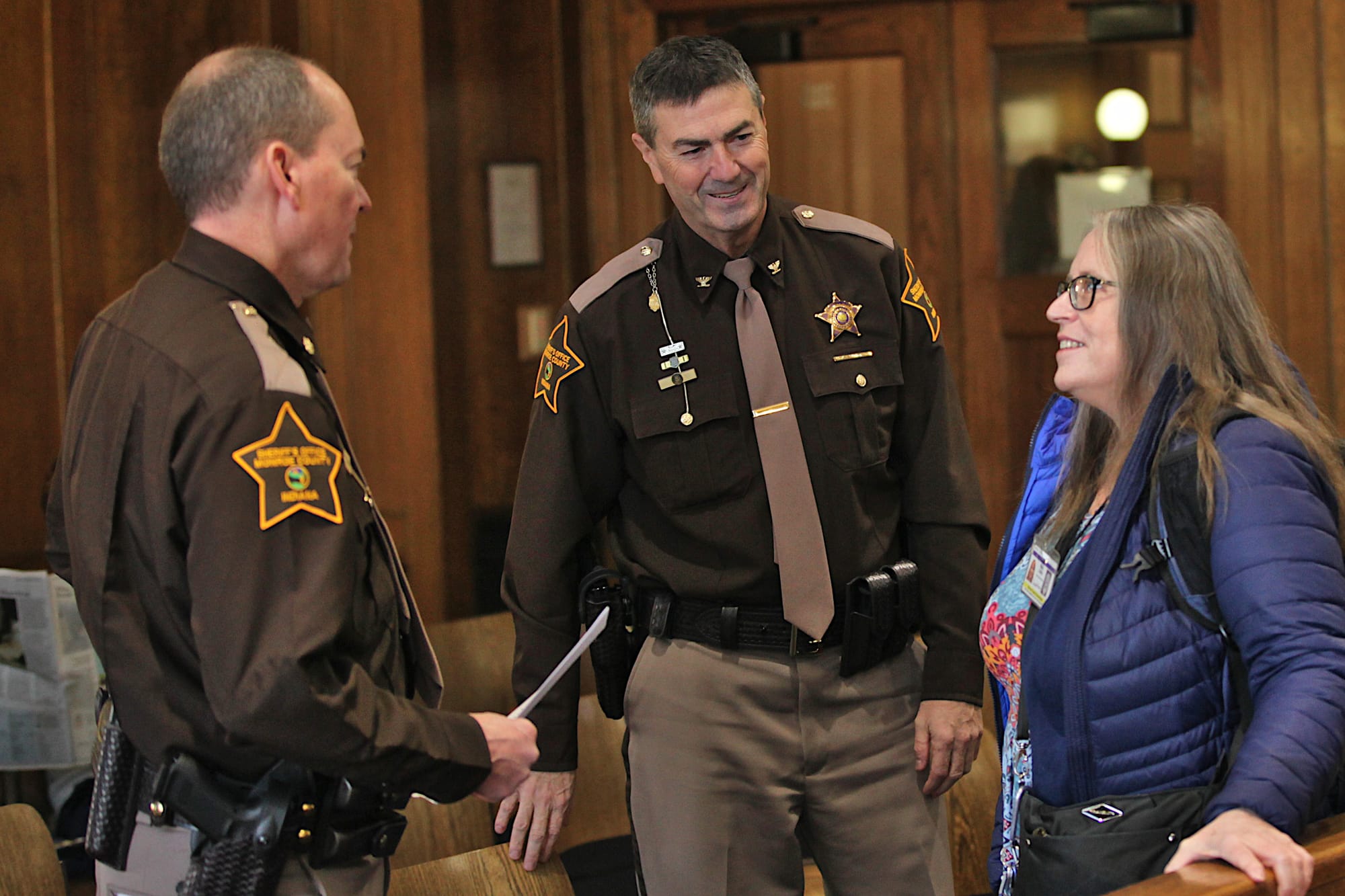

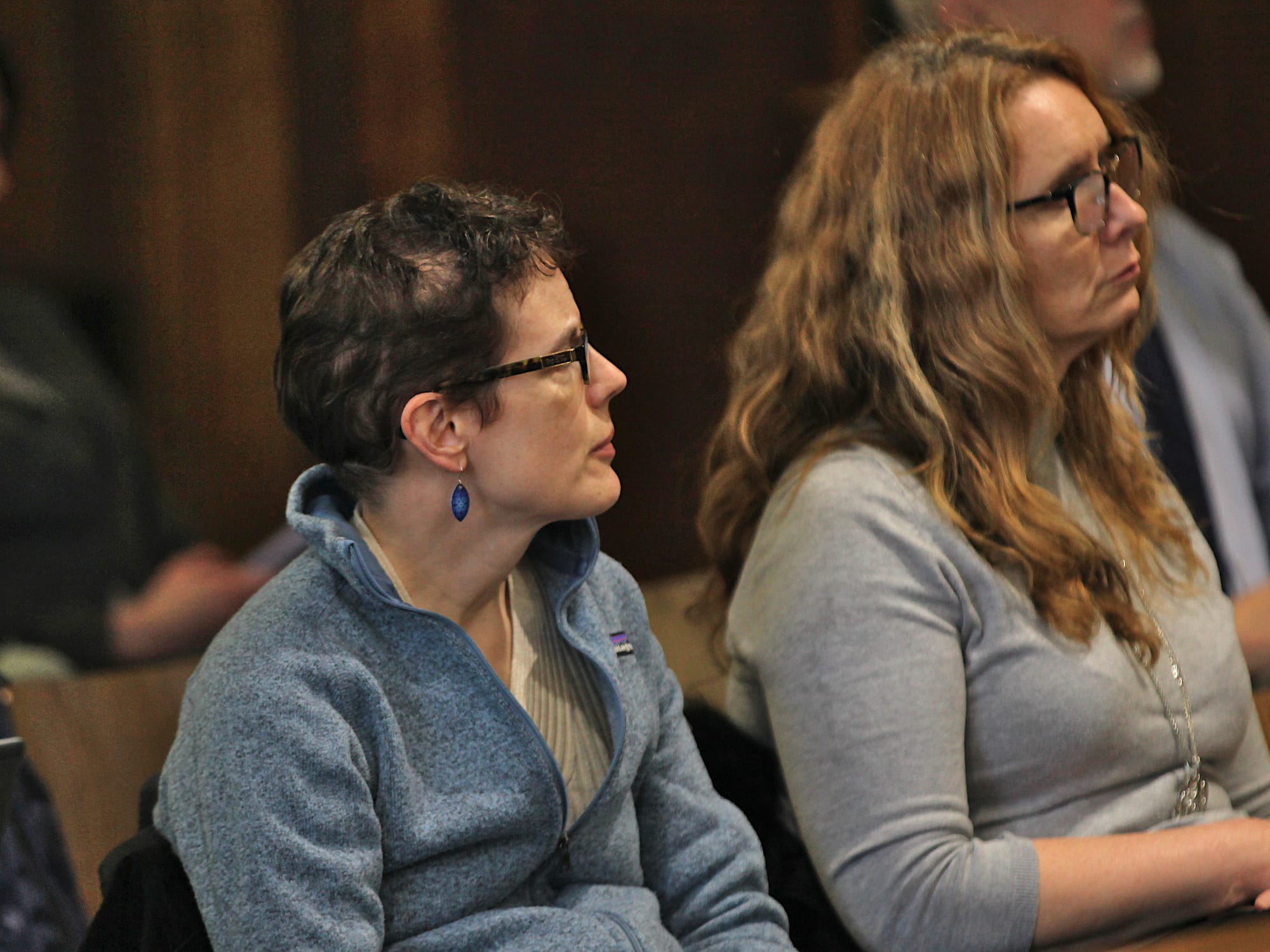
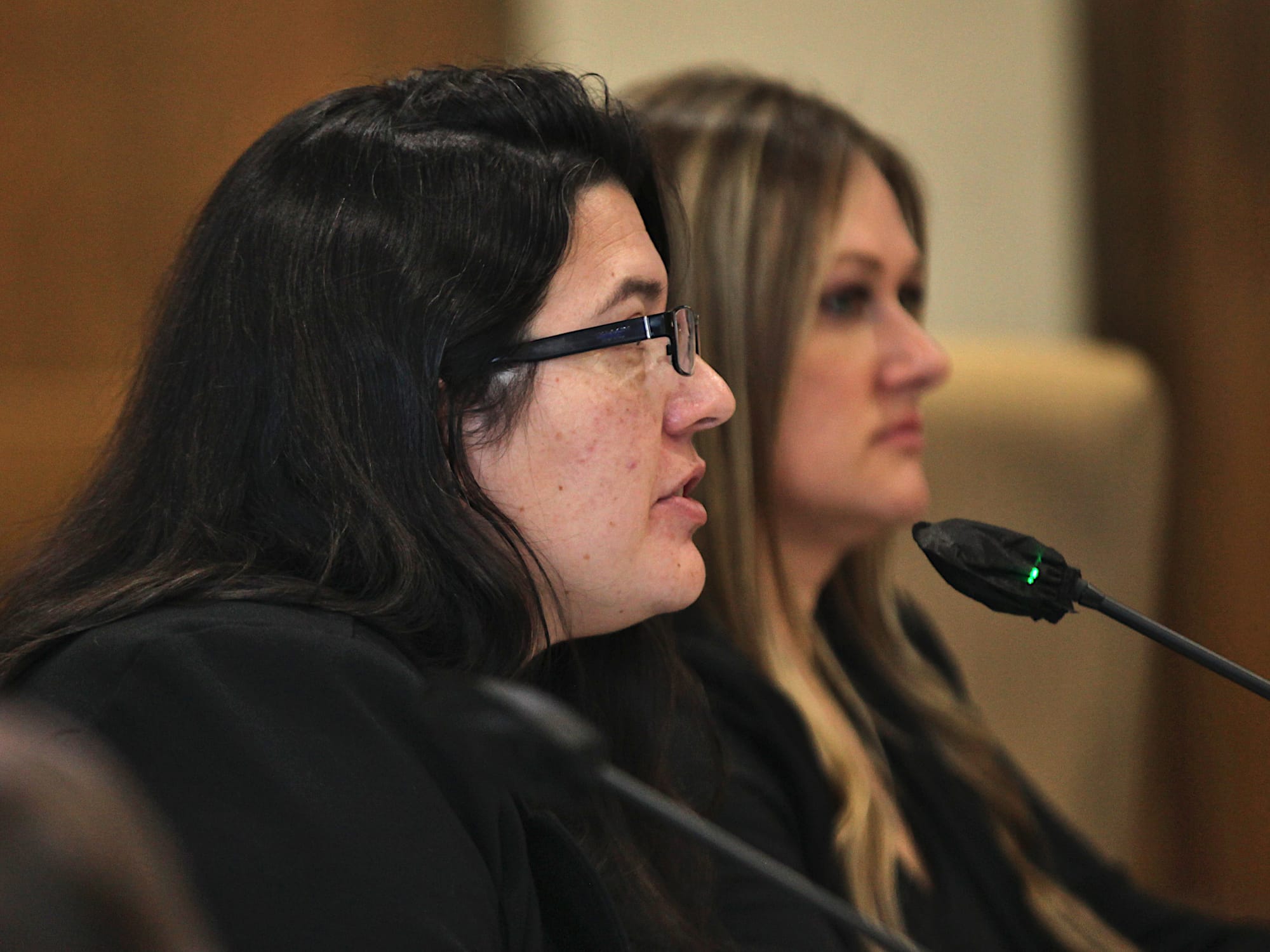
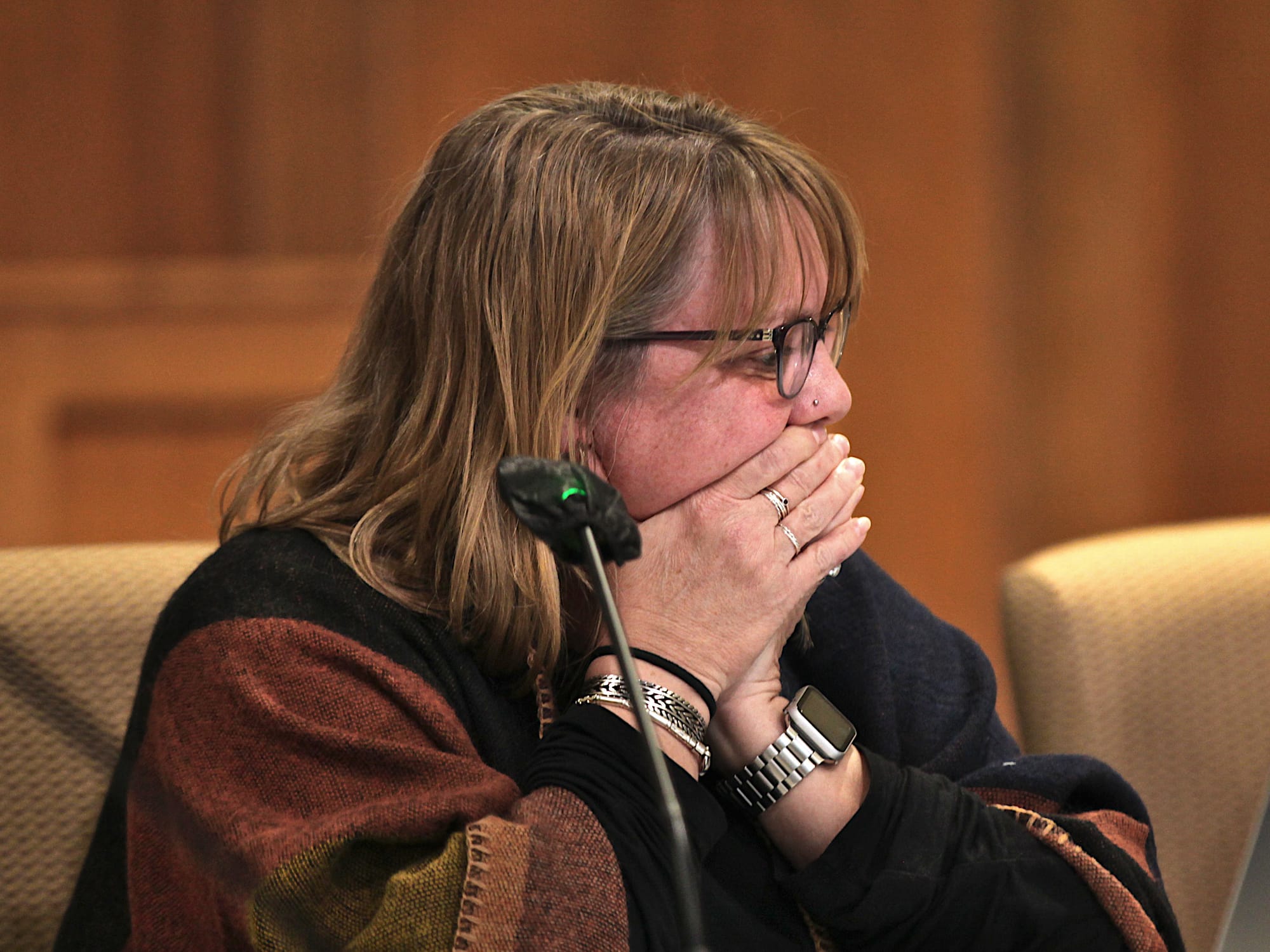


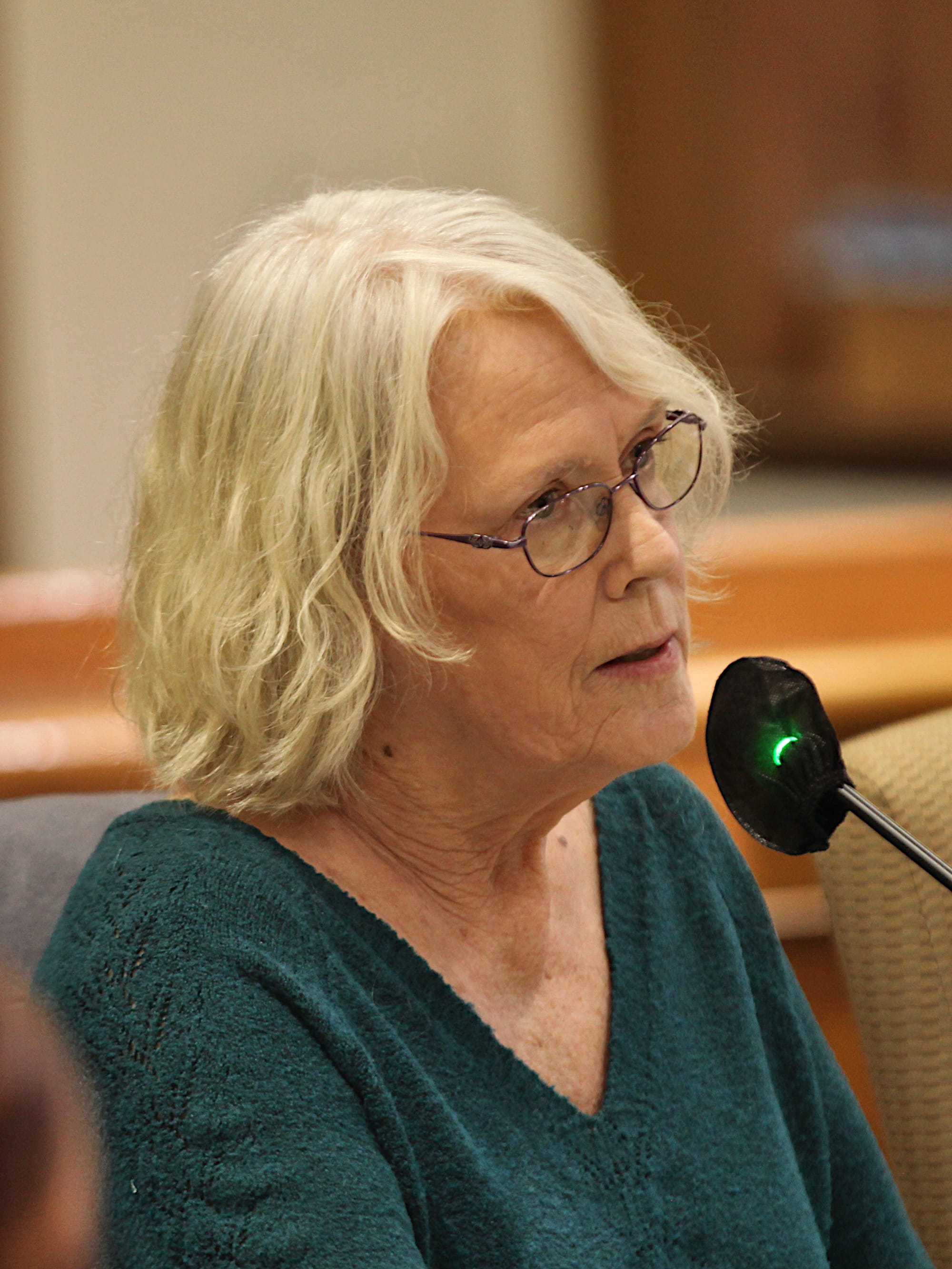
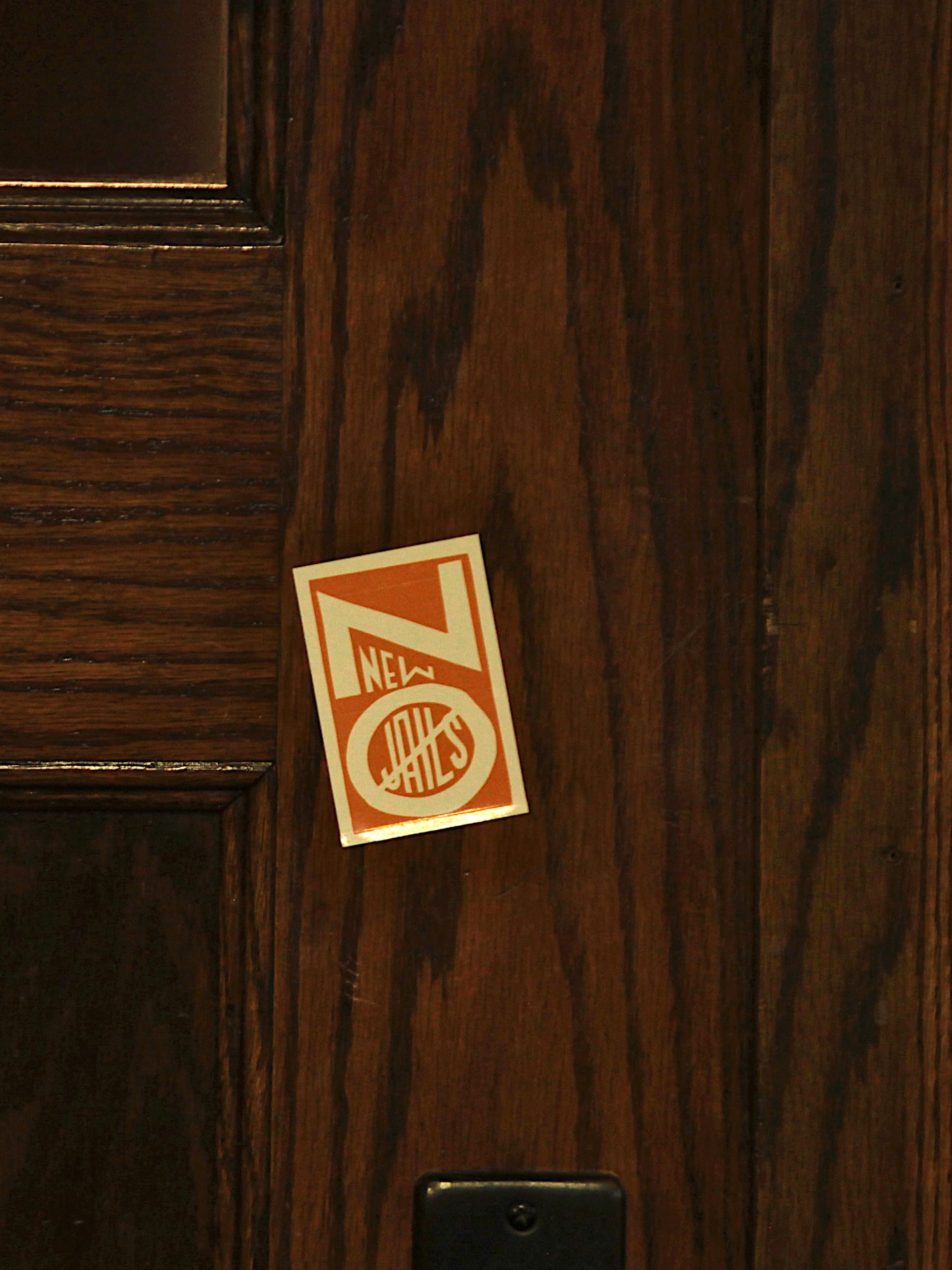

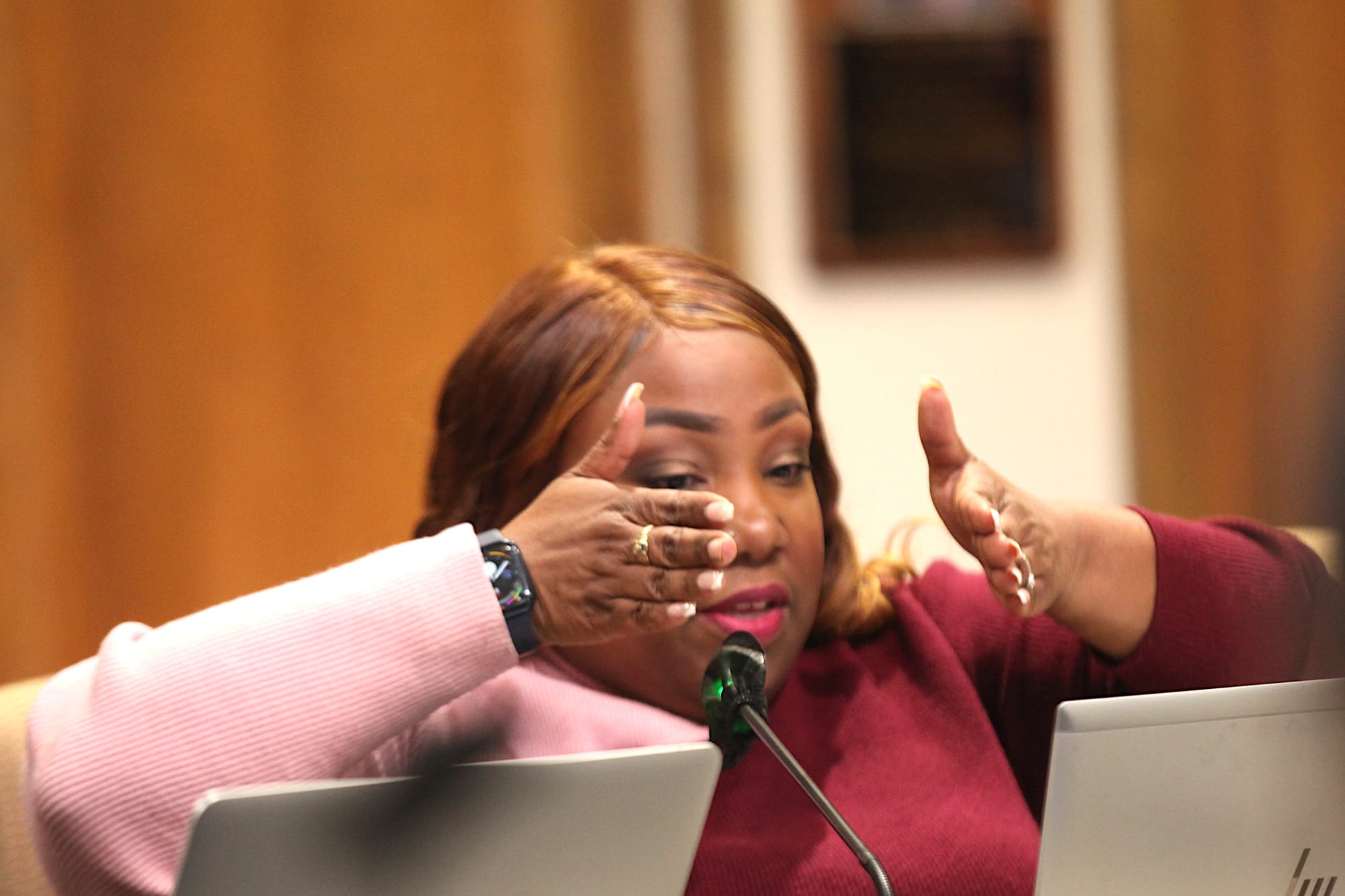






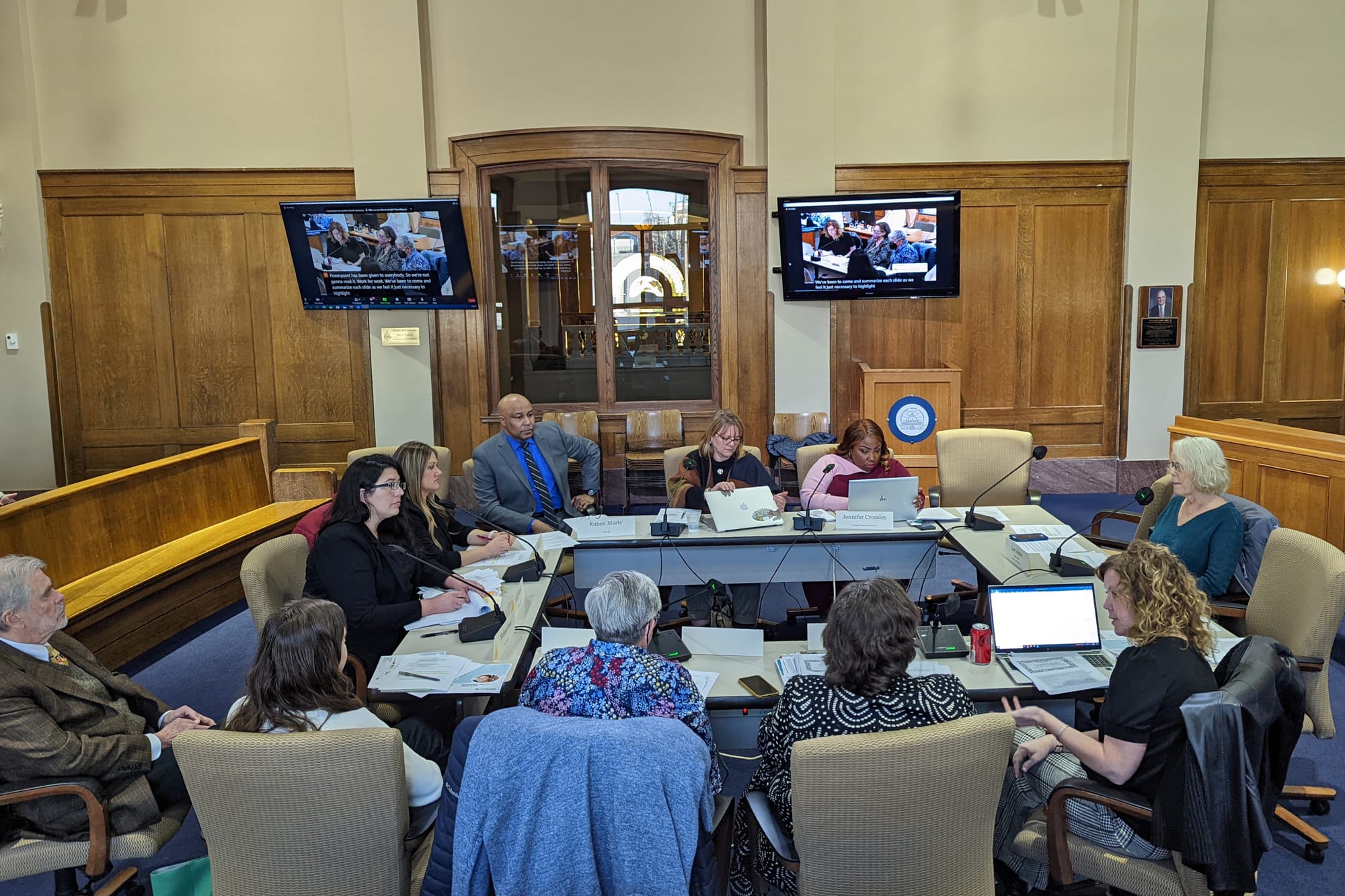
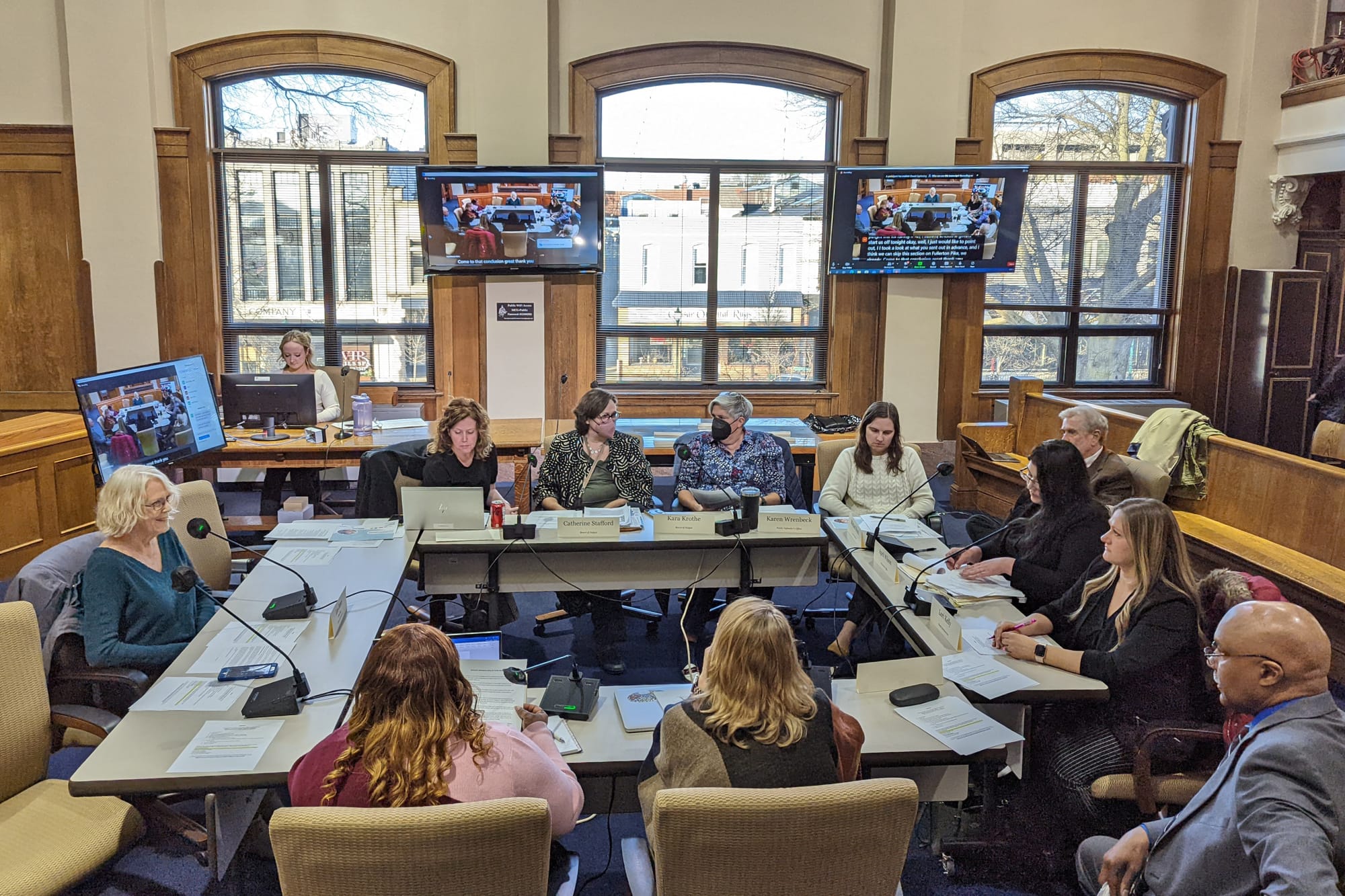
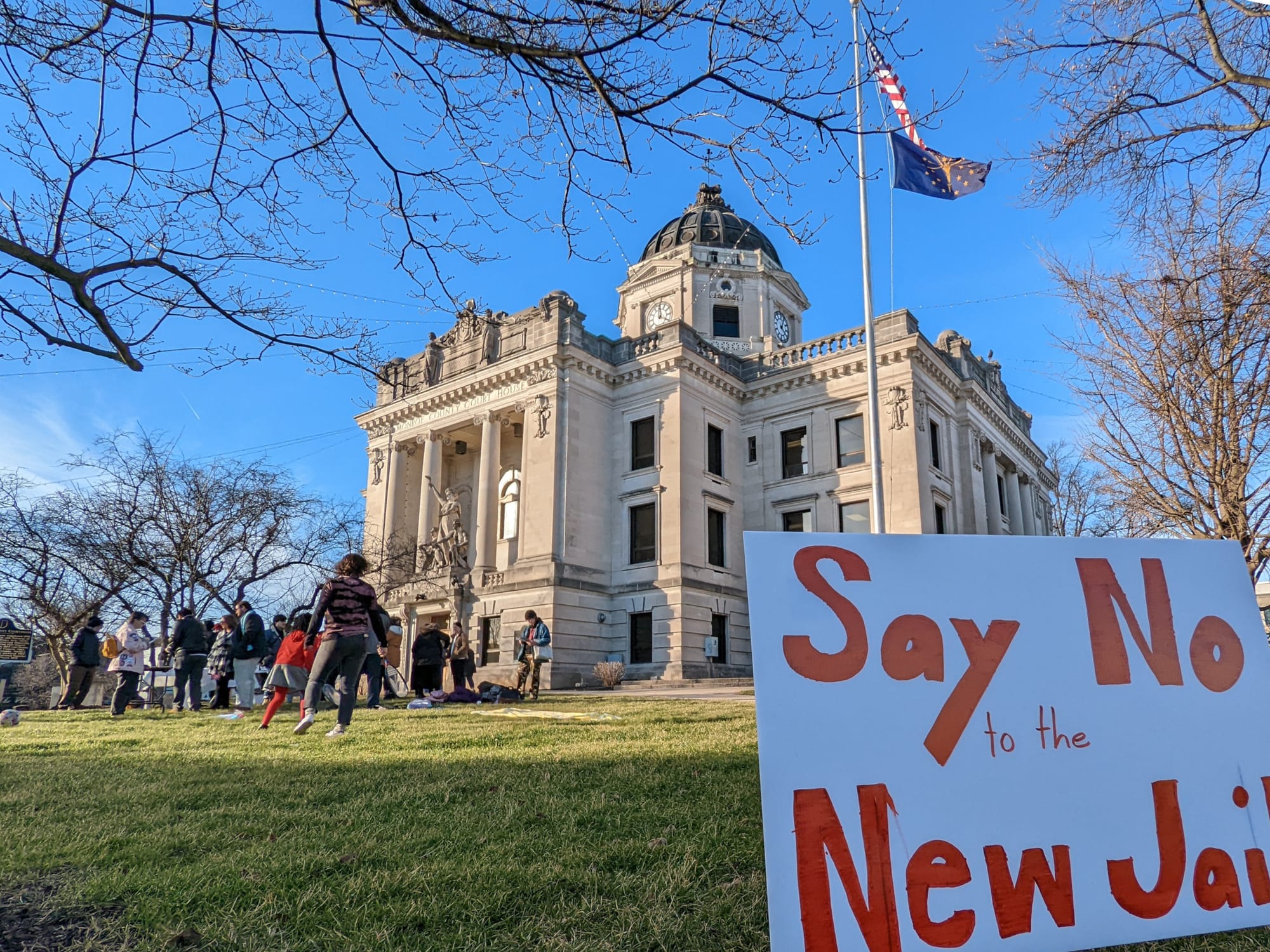





Comments ()